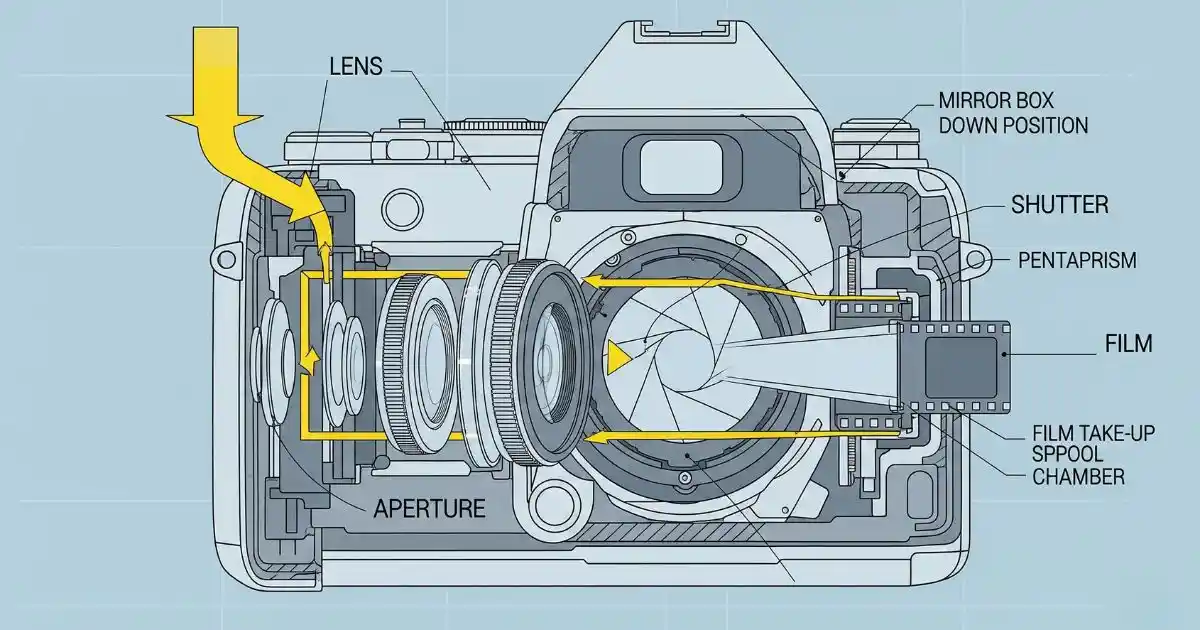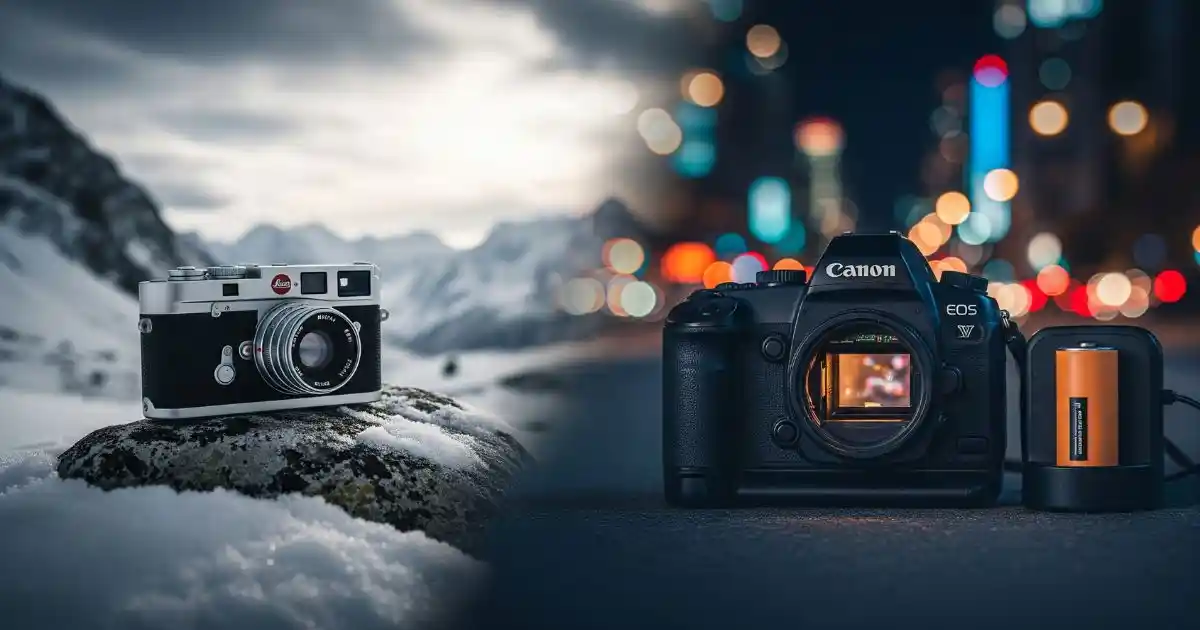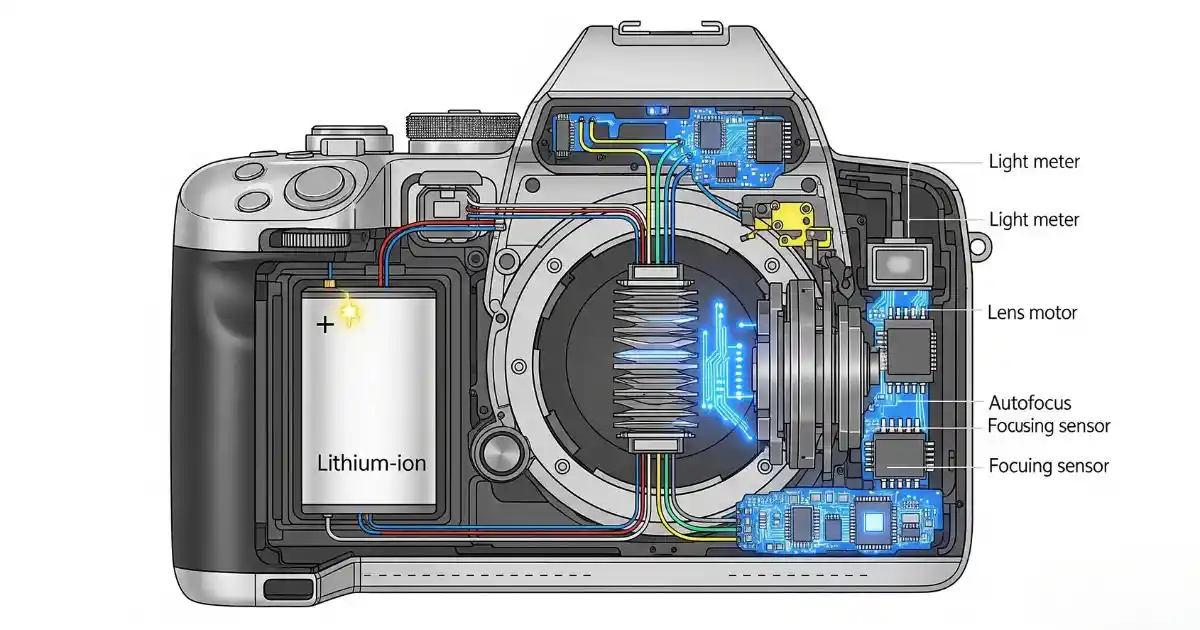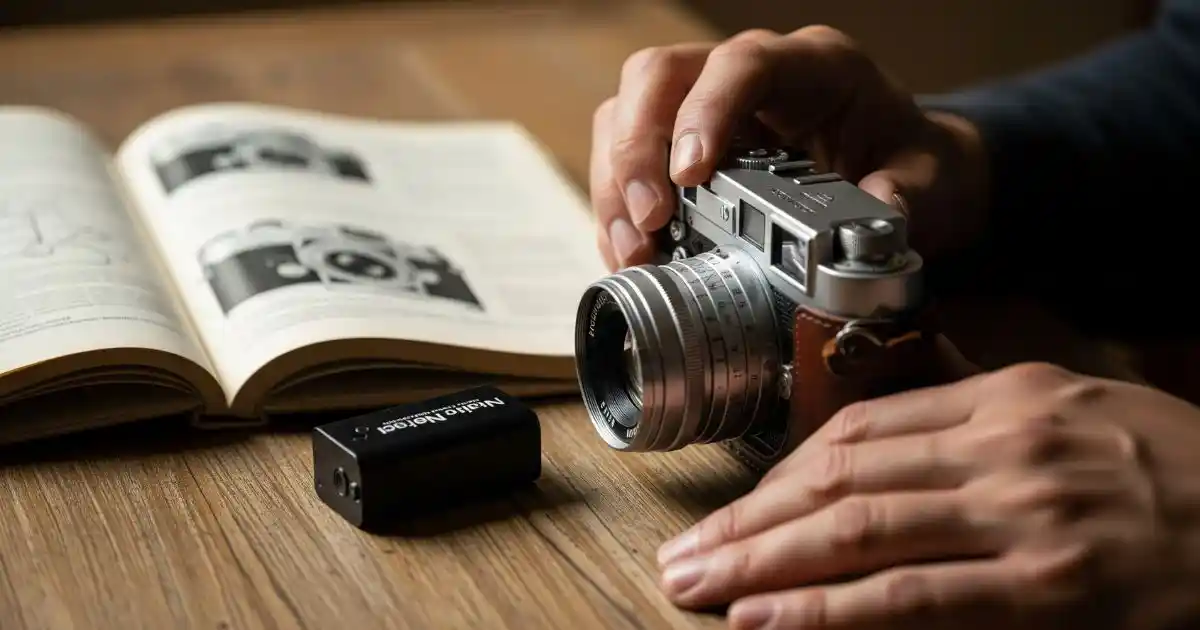In today’s world of smartphones and digital cameras, the charm of film photography still stands strong. For many, loading a roll of film, hearing the shutter click, and waiting for the prints to develop feels magical. But if you’re starting your journey with these classic cameras, one question often pops up: Do film cameras need batteries to work?
The answer isn’t a simple “yes” or “no”; it depends on the type of film camera you’re using. Let’s break it down so you can understand exactly when a battery is essential and when it’s not.
In this guide, we’ll break down exactly when film cameras require batteries and when they don’t, so you can confidently choose the right camera for your shooting style.

Quick Navigation & Previews
What Is a Film Camera?
A film camera captures images on light-sensitive film rather than an electronic sensor. Unlike digital photography, where your photo appears instantly on a screen, film photography relies on a chemical process to reveal your image.
Main Components of a Film Camera:
- Lens – Focuses light onto the film.
- Shutter – Controls how long light hits the film.
- Aperture – Adjusts the amount of light entering the lens.
- Light-Sensitive Film – Records the image when exposed to light.
How It Works in Simple Steps:
- Light enters through the lens and passes through the aperture.
- The shutter opens for a set amount of time (shutter speed).
- Light hits the film, creating an invisible image (latent image).
- The film is developed in a lab or darkroom to make it visible.

Do Film Cameras Need Batteries?
The quick answer: not always, and that’s part of the beauty of film photography. Many older film cameras are fully mechanical, meaning they work perfectly without a single battery. These models rely on precision-built springs, gears, and levers instead of electronic circuits. On the other hand, more modern or feature-rich film cameras use batteries to power certain functions, from light metering to autofocus.
Understanding the difference is important because it affects how you use, maintain, and troubleshoot your camera. Let’s break it down into two main categories so you can see exactly where batteries fit in.
1. Cameras That Don’t Need Batteries
Fully Mechanical Models – These are the true classics of film photography. Cameras like the Nikon FM2, Pentax K1000, or Leica M3 can operate entirely without batteries.
How They Work Without Power:
- Shutter and Aperture – These functions are purely mechanical. The shutter is controlled by springs and gears, while the aperture is adjusted manually through the lens ring.
- Film Advance and Rewind – Done via a lever that you crank by hand. This mechanical action physically moves the film to the next frame.
- Light Metering – If present, many older models use a selenium-cell light meter. This converts light into a small electric current without needing a battery. However, these meters can lose accuracy over decades, so many photographers use handheld light meters or exposure guides instead.

2. Cameras That Require Batteries
As technology advanced in the late 1970s and beyond, many film cameras incorporated electronic features for speed, accuracy, and convenience.
Common Battery-Powered Features:
- Electronically Controlled Shutters – Cameras like the Canon AE-1 Program or Minolta X-700 won’t fire without battery power because the shutter speed is controlled electronically.
- Autofocus Systems – Motors and sensors need power to detect focus. Without a battery, autofocus cameras can’t focus (though some have manual-focus fallback).
- Built-In Light Meters – Unlike selenium meters, modern light meters require a small battery to power the internal circuitry.
- Built-In Flash Units – Always battery-powered; without batteries, the flash won’t fire.
- Motorized Film Advance/Rewind – Popular in higher-end SLRs and point-and-shoot cameras, these features rely entirely on battery power for convenience.
Special Cases: Instant and Vintage Cameras
- Instant Film Cameras (like Polaroid) – Need batteries for film ejection and flash.
- Vintage Models Using Mercury Batteries – These are no longer made due to environmental laws, but you can often replace them with silver oxide or zinc-air alternatives. Always check compatibility before buying.

Tips for Knowing Your Camera’s Battery Needs
If you’re unsure whether your film camera requires a battery, a little research and observation can save you time, frustration, and missed shots. Here’s how to figure it out:
1. Check Your Camera’s Manual
The fastest and most reliable way is to read the instruction manual for your specific model. Even if you don’t have the original copy, most manuals are available for free as PDFs on photography websites or camera forums. The manual will tell you exactly which functions require a battery and which don’t.
2. Look for a Mechanical (M) Shutter Mode
Many cameras with electronic features still include a fully mechanical backup mode. On some models, this is marked as “M” or “B” (bulb). In this mode, the shutter works without battery power, though you may lose access to features like auto exposure or the light meter.
3. Test Without a Battery
If you’re comfortable experimenting, remove the battery and see if the camera still fires. For mechanical cameras, you’ll likely still be able to take a photo and wind the film. For electronic models, you might find that nothing happens — confirming that the battery is essential.
4. Know Your Meter Type
Older cameras often use selenium light meters, which work without batteries by converting light into electrical current. Modern light meters, however, almost always need a small battery to function. If the meter needle doesn’t move, it may be because of a dead battery rather than a broken meter.
5. Carry Spare Batteries
If your camera depends on a battery for core functions like shutter release or autofocus, keep at least one spare set in your bag. Batteries can drain quickly in cold weather or after long periods of use, and having a backup means you won’t miss a perfect shot.
Conclusion
So, do film cameras need batteries? The answer depends on the type of camera you’re using. Fully mechanical models can work flawlessly without any power, making them ideal for photographers who value simplicity, reliability, and a pure hands-on shooting experience. On the other hand, electronic and feature-packed film cameras rely on batteries for essential functions like shutter control, autofocus, light metering, and built-in flash.
By understanding your camera’s design and battery requirements, you’ll avoid unpleasant surprises and ensure you’re always ready to capture the moment. Whether you choose a battery-free classic or a modern, feature-rich model, film photography offers a timeless way to connect with your craft one frame at a time.
Leave a Reply